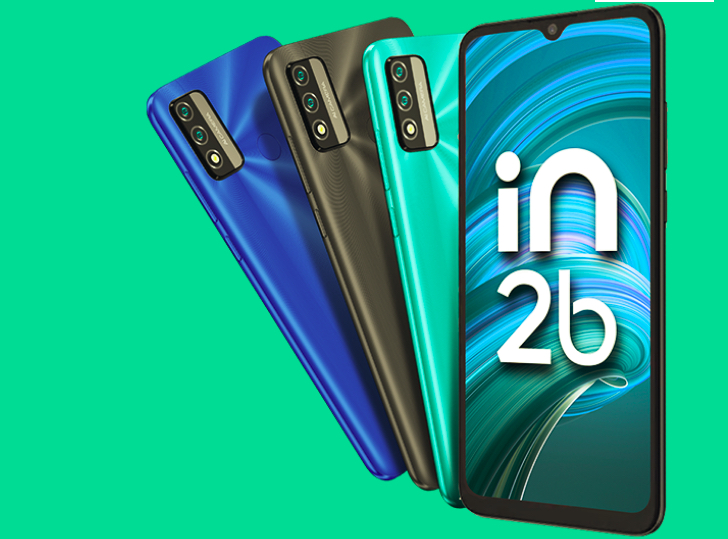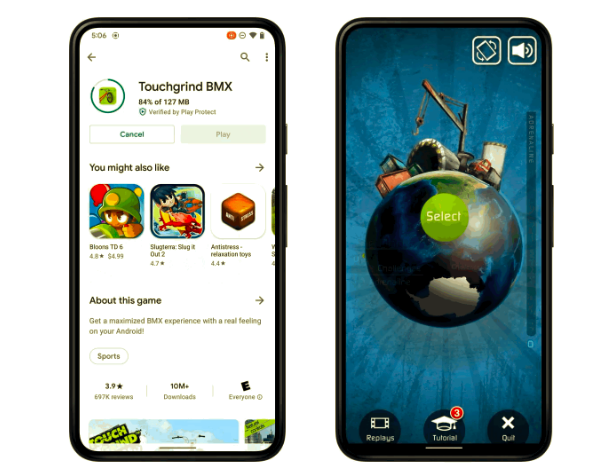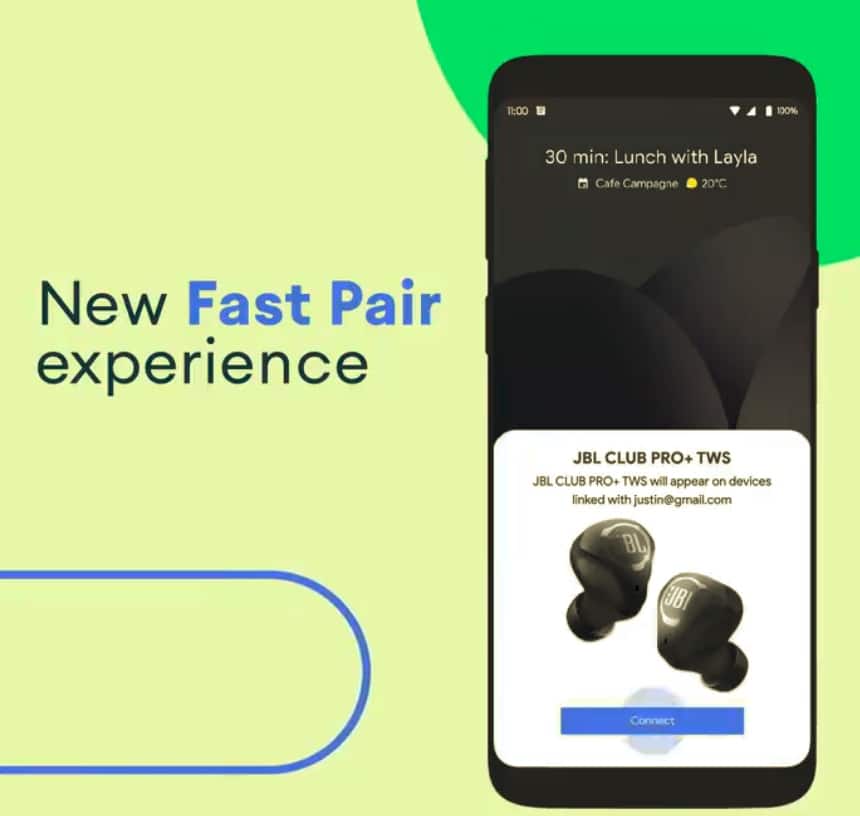If there’s one thing the Galaxy K Zoom proves, it’s that Samsung’s engineers don’t hang around playing chequers – this is a really stunning redesign of the S4 Zoom concept from a year ago. It’s better across the board, with the main improvement being a form factor that’s actually pocketable, being 15mm thick for much of its length and with the camera hump (an extra 4mm or so) fairly smoothly integrated. There’s still no mistaking this for anything but a camera-centric phone, but at least it is a phone, whereas last year’s S4 Zoom was far more evidently a standalone camera bolted onto the back of a phone screen.
The idea is the same though – take the guts of a Samsung £100 (or so) camera, with optical zoom, OIS and proper Xenon flash, and somehow integrate it into a modern Android smartphone – and the K Zoom succeeds where the S4 Zoom failed, by being smoother, thinner, faster, better built and more highly specified on the phone front. That’s not to say that there aren’t issues here, but the K Zoom is a more credible drop-in replacement for a traditional Android smartphone.

K Zoom showing the optional opening My Magazine system
And it feels great in the hand, too, despite being a typical Samsung all-plastic design. From the pocketable and hand-friendly size to the faux-metal outer rim, from the high density polycarbonate frame to the removeable, beautifully textured, ultra-grippy rear cover, it’s worlds away from the tackiness of the Galaxy S III (and similar models). There are no creaks or weaknesses and, short of making the device out of stainless steel, it’s hard to see how the K Zoom’s construction could be improved.

The camera hump – definitely there, but not offensively so….
The star feature, the integrated 1/2.3” sensored camera, with integral 10x optical zoom, is well positioned, with curves in the rear cover making the camera’s zoom mechanism appear as slim as possible. The concentric circles of the zoom are indeed slimmer than in the original S4 Zoom and it’s really rather remarkable when watching the lens system extrude from the K Zoom’s body and wondering how it all fits in, especially leaving room underneath for the main 4.8” AMOLED display.

Turned on, the zoom lens system extends rather wonderfully…
Impressive though all this is, in terms of fooling the eye and hand, the K Zoom is still resolutely chunky by modern smartphone standards, at around 19mm at its thickest point. You just have to bear in mind that a) there’s a very, very good reason for the thickness, and b) it feels very comfortable in the hand – sometimes ultra thin can be less comfortable. Just ask any Xperia Z series owner.

The whole rear of the K Zoom, curved, ergonomic and grippy….
Components
Continuing my tour around the K Zoom hardware, we have a proper Xenon flash inset into the back – at last! Just as for the horrifically bulbous S4 Zoom last year and thinking back many years to the equally horrifically underpowered Motorola XT720, Xenon flash is the key to being able to shoot photos under all light conditions and however fast moving your subject is. Manufacturers have shied away from Xenon, claiming that the bulb and capacitor are too bulky, too costly and too power-hungry, but the technology makes absolute sense here and lets the K Zoom compete in social situations with many standalone cameras, if not DSLRs. Situations where 99.9% of other camera phones would produce blurry messes.

Shutter button and Xenon flash, in this camera-centric smartphone
The physical shutter button is over-large and wonderfully sprung, with a light touch focussing and a firm press taking the shot. And, in conjunction with the volume up button, can be used to launch the Camera application from a ‘locked’ phone state. I’d have preferred a simple long press of the one button, but maybe Samsung know best here.
Also nicely implemented is the main ‘home’ button, beloved of Samsung. On the likes of the Galaxy Notes and S series of devices, you get something with quite a bit of wobble and ‘travel’. Here on the K Zoom, the travel is deliberately limited and the button is more stable and satisfying as a result.

A very capable 4.8″ smartphone – here’s the default lockscreen and note the home button and ‘Recent apps’ capacitive control….
As with the recent Galaxy S5, the ‘menu’ control is now ‘recent apps’, a change which makes more sense in these days of Android 4.4 and on-screen ‘…’ menus and slide out panels. Plus long pressing the home key can now bring up ‘Google Now’, an assignment which works intuitively and which I was very happy with.
Also notable on the hardware side is the 2430mAh removeable battery, always reassuring to be able pluck this out if something goes wrong or to extend device life. Plus a lanyard attachment point – though you have to provide your own lanyard!

With the back off, you can see more of the K Zoom’s construction, plus the removeable battery….
Stereo microphones (top and bottom) provide exceptional audio, for example during video capture, even at concert volumes (going from the S4 Zoom behaviour here – I’m testing the K Zoom at a rock gig in the next few days and will amend this text afterwards). And the mono speaker, located just above the camera hump, is really good in both quality and volume – I suspect it’s the same component as in the Galaxy Note II and S4 that we all loved.
Good to see in the box is a proper multimedia headset, i.e. with inline volume controls as well as playback pause/accept (depending on what’s happening). Every phone should have one of these – it’s surely only a few cents more on the bill of materials?
Plus a microSD slot, accessible under a flap. Now, this is important, as you might expect, given the camera-centric nature of the device. You’ll be wanting to capture stills and video to a sizeable card and with the flexibility to take the card out and plug it into a printer or laptop or projector, or whatever. Actually, it’s not so much ‘want’ as ‘be forced’, since Samsung only supplies the K Zoom in a 8GB variant, meaning 4GB or so free out of the box and only 2.5GB free after you’ve installed a typical set of applications and got everything synced up and running.
This should – rightly – raise warning flags for anyone with experience of Android. A few Gigabytes is fine for casual application use, but it’s going to disappear in a puff of smoke if you start installing any sizeable games which aren’t perfectly behaved in terms of their (usually limited) microSD use.
Not that a typical mobile gamer would also be a confirmed shutterbug (and vice versa), so I can see what Samsung was thinking here, but the smaller internal memory capacity seems a cost-cutting measure too far – smartphone history is littered with the corpses of devices which were shipped with too little system memory and ended up not even having room for OS updates. The K Zoom isn’t quite this bad, but 16GB would have avoided a lot of user worry.

The 720p pentile display is OK but text and fine detail can be ‘fuzzy’…
Also a cost-cutting measure, perhaps, is the use of a pentile 720p display. The resolution itself isn’t really a problem at this screen size, but the pentile system – in which alternate pixels have red or blue sub-pixels, but not both, is an issue. Text looks slightly ‘fuzzy’, games aren’t quite as clear as they should be and there’s a general feeling of underachievement in the display overall.
The effect isn’t a showstopper, though, and Samsung will point out that ‘pentile’ AMOLED displays draw less power and generally last longer (in terms of brightness) than ‘RGB’ versions – but who are they kidding, it’s all about build cost here.
THAT Camera
The K Zoom is all about the camera though, which is good, because it’s generally excellent. Still images (at 16MP in 16:9 mode) are detailed and comparable in quality to the best of Android at the moment. And that’s before you factor in the Xenon flash, for evening and indoor shots – as I say, unique in the Android world right now. And, most of all, that’s before you factor in the optical zoom capability.

Showing the full (10x zoomed) extent of the optical zoom in the Galaxy K Zoom… How does it all fit in?!
Underestimate optical zoom at your peril. Take any scene or subject you care to snap and then look at it – there’s a good chance that you wanted to get closer, to some degree. On most phone camera shots, all you can do is take the photo as-is and then crop it down, ending up with perhaps a 2MP or 3MP shot that’s perfectly framed. With optical zoom, you go straight for the framing and degree of closeness needed and snap that as a fully detailed 16MP shot. Once you’ve tried it (this isn’t new in the wider camera world, of course, but so many of us have got out of the habit of using standalone cameras!), you’ll find optical zoom addictive. Almost every shot benefits from some zoom, etc.
Now, optical zoom has two big disadvantages. (Well, four if you also include cost and the durability of more moving parts.) As the zoom extends, the amount of light that can be gathered up towards the sensor is reduced, so – in theory – zoomed shots in poor light might show greater ‘noise’. In practice, the K Zoom’s image processing seems to handle this well and any noise increase in the resultant photos is negligible. Amazingly.
The second disadvantage is the extra physical bulk, of course. Several centimetres of extending plastic and glass have got to live somewhere. Making the Galaxy K Zoom all about the balance between thickness and zoom. Do you need zoom in your smartphone camera? If so, put up with the extra half dozen millimetres and move on with your life. If not, then the K Zoom isn’t for you and you’ll be better off with a Galaxy S5 mini (to be announced shortly, it seems!)
The same kind of thinking applies to the Xenon flash, of course. And if, like me, the thought of optical zoom and Xenon in the one phone excites you, then the K Zoom is a shoe-in.
Results are pretty good in practice, as you can see below, with my only complaint being that colours can be a little muted – and subjects overexposed – by default. Thankfully you can set the ‘Program’ shooting mode up how you like it – for example, with exposure notched down and colour saturation cranked up – and this is remembered for the next time you use that mode.
Hopefully a firmware update will tweak the default imaging algorithms in due course so that full ‘Auto’ produces best results.

A typical shot on a bright day – note that the house is very slightly muted….

It’s possible to adjust saturation at capture time, but an even quicker way is to use the excellent built-in HDR mode….

Snapping as-is on the K Zoom…

Cropping in shows the default detail from the 16MP image…

Using the 10x zoom facility, you can get really close – here’s the 16MP shot taken with the zoom lens….

And here’s a 1:1 crop of the zoomed photo – quite remarkable what the optics here can capture….

Macros are a piece of cake – here shooting in low light through glass….

A typical macro outdoors, yes, the rose really WAS this colour!

Shooting in bright sun at full 10x zoom, here are tank tracks from a vehicle around 35m away….

Low light moving subjects are a doddle for the Xenon flash – eat your hearts out LED-equipped models!

Shot at the end of dusk. Not a lot of light around….

At 3x zoom, quality is still good, and more can be seen….

At 10x zoom, quality is still just about acceptable, yet look what we can see….

Cropping into this 10x zoomed 16MP image gives this detail. A number plate legible in near darkness at well over 100 metre distance. Try that on a normal camera phone!
In fact, there’s a vast amount you can fiddle with here. From everything you’d expect – EV, ISO, white balance, sharpness, saturation, and contrast to Pro Suggest, imaginatively named predefined combinations of settings compiled by Samsung and other third parties and all available for download in a free directory online.

Pro Suggest sets up specific combinations of detailed settings, as suggested by Samsung and others
Plus all the usual Samsung camera modes, including ‘Shot & more’ (burst mode effects), ‘Beauty face’, ‘HDR’ (which works stunningly well), ‘Panorama’, plus ‘Night mode’, which combines multiple images to average out random noise and produce really clean results.

The usual excellent set of Samsung camera modes, getting more and more polished all the time – the K Zoom has the full set!
The most powerful and flexible camera phone ever created? I’d say yes, on balance, dethroning the Nokia 808 PureView, with the caveats over the extra camera bulk and over Samsung needing to do a little tweaking to the full ‘auto’ mode – as it is there’s slightly too much work needed to be done by the user in order to get the best results.
Video capture also makes excellent use of the optical zoom, as you can see here, with the OIS making perfect sense, to produce great results even when zoomed in by 10x.
A 2014 smartphone
Away from the camera, the K Zoom is a pretty fast smartphone, even in the 2014 pantheon, with an AnTuTu benchmark score of 33174, which puts it only fractionally behind the flagship Galaxy S5 and Note III. 2GB of RAM is perfectly sufficient for this 1.7GHz combination quad core/dual core chipset and for the 720p display. Meaning that everything’s snappy, all running on the latest Android 4.4.2 Kitkat.
Much debate has raged, for geeks at least, on the merits of Touchwiz versus wiping it all away and using custom firmware. I finally came down on the side of TouchWiz, to keep all the Samsung optimisations that work with the company’s audio and imaging hardware, yet turning much of the Samsung extra software and settings off. This conclusion is doubly reinforced in the case of the K Zoom, since a third party firmware would know nothing of the advanced zoom hardware or Xenon flash. Besides, much of Samsung’s own UI ‘aids’ are turned off by default on the K Zoom anyway, and it’s the work of minutes to go through settings (un)checking the rest.
Off to the left of the homescreens, My Magazine, first seen on the Galaxy S5, is effectively a customised version of Flipboard – which is also embedded in the firmware and can’t be removed, so presumably the two are effectively one, under the hood. It works quite well though, I use it as something a little ‘different’ to dip into when I want a change from my personal email and social activities. The limited number of stories is both a blessing and a curse – it doesn’t take long to browse through, though if you do want more then you have to head for the real Flipboard client….

My Magazine is a subset of, and powered by, Flipboard, which is also included here
The Android notifications shade has the usual excellent Samsung carousel of quick settings but is somewhat polluted here by a pair of big buttons, for ‘S Finder’, a local search utility, and ‘Quick Connect’, a wizard for getting your phone hooked up with other network devices. Both are valid things to include on the phone, but there’s no way that I can see to remove the big buttons from the shade – I slightly resent the space they occupy.

The K Zoom notifications shade and My Galaxy options
As usual, TouchWiz offers the chance to ‘hide’ applications you don’t want to see in the main app lists, though there’s not that much to hide on the K Zoom, since Samsung has been comparatively restrained in what it has added here. ‘Group Play’ (for sharing content with others on the same network), ‘Samsung Apps’ and ‘S Voice’ are the only obvious Samsung insertions worthy of possibly hiding, while ‘My Galaxy’ is a door into your online warranty and some links to other apps and articles of interest. Curiously, ‘Galaxy Essentials’, the latest list of Samsung apps that you can grab if you really want them, is relegated (or promoted?!) to a menu option IN the main app list view!

Galaxy Essentials, curiously tucked away on a menu now…!
Third party licensed extras include ‘Studio’, a hub for photo and video editing and assembling, and the ubiquitous Dropbox.

The Studio media editing hub and vestigial Samsung apps store….
Some duplication exists, as usual, with Internet and Chrome vying for browsing duties, while Google’s new Photos system, which integrates local and cloud content, vies with Samsung’s slightly more device-focussed Gallery. Still, both are important areas of functionality and I guess a user can simply use the one they prefer.
Otherwise this is a modern, fast Android-powered smartphone with a colourful 4.8” display. That it’s rather thicker than the norm is the price you pay for the camera capabilities, but I can’t emphasise enough that the basic curve of the back is actually a very good fit for the human hand and the only real problem will be if you have an issue with the extra 4mm or so for the large camera concentric zoom rings.
In today’s ‘thin is in’ phone landscape, the K Zoom is a niche device, to be sure. Which is a shame, since even casual users might have their imaginations fired up by the possibilities of using what’s effectively a decent standalone camera in their ‘always with them’ phone. With zero effort, it’s possible to zoom in and out and find new subjects. With zero effort, the Xenon flash will help Android users take great snaps of moving subjects indoors and at night, at last.
As a huge fan of the now obsolete Nokia 808, the Samsung Galaxy K Zoom comes as a breath of fresh air, bringing similar ambitions and lack of compromise into the 2014 Android world. Like the 808, the K Zoom has the potential to be a classic device for anyone who prizes good imaging in a smartphone. Its sales figures are unlikely to set the world on fire, yet every time you use it and the lens mechanism extrudes from your phone, jaws will drop. And you’ll often get great images to boot!









